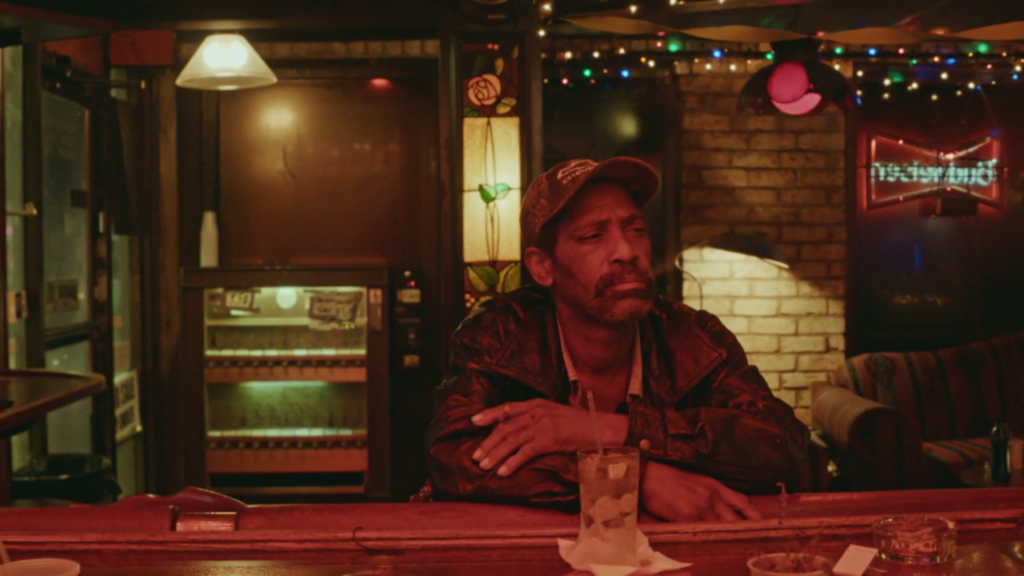
Film Review: Bloody Nose, Empty Pockets
Directed, produced, and photographed by Bill Ross IV & Turner Ross. US, 2020, 98 minutes.
Available to rent here.
It’s right to begin this review by saying I feel unqualified to write it. Bloody Nose, Empty Pockets is a movie about bars—about the hole-in-the-wall neighborhood tavern as an evaporating space that’s servicing an even faster-evaporating community. But I turned 21 a little over a year ago, and so have little nostalgia for bars; my strongest memories of them are of the fidgety anxiety that comes with any attempt at ordering underaged. And the Vegas bar that directors Bill and Turner Ross depict in this film—bestowed with the name Roaring 20s, equal parts generic and ironic—is not the kind of place where that anxiety is present. It presents a deeply comfortable, deeply familiar world. The relationships between the regulars here have been worn-hard through casual use, like the drooping couches the bar patrons perch on throughout the film.
At first glance a straight documentary, Bloody Nose, Empty Pockets chronicles the final night at Roaring 20s before it shutters for good. It begins with the bar’s permanent resident, a burned-out former actor and current alcoholic named Michael, shaving in the bathroom after having apparently passed out there the night before. He possesses the particular sensitivity of a failed intellectual, and true to that stereotype he toes the line between being beloved and tolerated by the cast of characters that appear and disappear throughout—a day-shift bartender with musical aspirations, a night-shift bartender with a moderately vagrant teenage son, a quietly mealymouthed Vietnam vet among them.

Despite presenting itself as documentary Bloody Nose, Empty Pockets was produced in a manner more akin to a psychological experiment: Non-professional actors were cast by the directors and let loose in the bar, which is really in New Orleans, to a hand-picked soundtrack of music and TV cues. Most reviews feel compelled to note that fact, but it’s not the experimentalism of the film’s method that’s interesting in and of itself. Far more compelling is its attentiveness to texture and interaction—yet this same kind of close attention is what reveals the film as a work of fiction.
Anyone with proximity to “creative writers” (a nightmare phrasing) knows that realist fiction tends to be densely woven to the point of being overworked. Film is no different, and the densely woven details that make up this one—the bartender yelling at the baroque Jeopardy clues that appear on the bar TV, the sudden flashes of anger visible through cracks in the veneer of gentle alcoholism maintained by many of the regulars, the way the too-warm light of the bar gives way to the clinical harshness of streetlights when someone walks out—can ring hollow even before you learn about their making. The film’s intimacy becomes claustrophobic. And while being inside for weeks on end grants Bloody Nose, Empty Pockets a certain charm, what it made me long for most was the clean breath of cold air when you finally exit a bar. Alone at last. [★★★]
